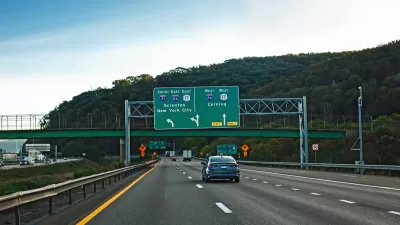At the beginning of a two-day trip to India, the world's third largest emitter of carbon dioxide, U.S. Secretary of State John Kerry made solving climate change a focus of his public remarks. The U.S.'s own failures elicited skepticism from locals.
"U.S. Secretary of State John Kerry arrived in India over the weekend and gave a speech urging the fast-developing country to work closely with the U.S. and other countries on solutions to climate change," writes John Upton. "The Americans’ arrival in Delhi coincided with deadly floods in northern India that some Indian officials have linked to global warming."
"But though climate change poses urgent dangers in India, Kerry’s speech was not received warmly by all of the nation’s environmentalists. Some felt they were being lectured to by the secretary of state, a representative of a nation that is second only to China in total greenhouse gas emissions."
"Chandra Bhushan, a senior official at the Delhi-based Centre for Science and Environment, was unimpressed by Kerry’s speech, as he explained in an opinion piece in Down to Earth, a leading Indian environmental magazine published by his nonprofit:
I have no problems with [Kerry's] pitch for countries coming together to develop renewable energy. But I have issues with the fact that nowhere in his speech did he mention what the US is doing on renewable energy or what is the renewable energy target that the US has set for itself for, say 2020. The fact is that today close to 20 per cent of India’s electricity supply is from renewable sources (including hydropower). India has set itself a target for renewable energy; the US has not.
FULL STORY: Kerry implores India to tackle climate change, ticks off Indian enviros

Pennsylvania Mall Conversion Bill Passes House
If passed, the bill would promote the adaptive reuse of defunct commercial buildings.

Planning for Accessibility: Proximity is More Important than Mobility
Accessibility-based planning minimizes the distance that people must travel to reach desired services and activities. Measured this way, increased density can provide more total benefits than increased speeds.

World's Largest Wildlife Overpass In the Works in Los Angeles County
Caltrans will soon close half of the 101 Freeway in order to continue construction of the Wallis Annenberg Wildlife Crossing near Agoura Hills in Los Angeles County.

Eviction Looms for Low-Income Tenants as Rent Debt Rises
Nonprofit housing operators across the country face almost $10 billion in rent debt.

Brightline West Breaks Ground
The high-speed rail line will link Las Vegas and the Los Angeles area.

Colorado Bans No-Fault Evictions
In most cases, landlords must provide a just cause for evicting tenants.
City of Costa Mesa
Licking County
Barrett Planning Group LLC
HUD's Office of Policy Development and Research
Mpact Transit + Community
HUD's Office of Policy Development and Research
Tufts University, Department of Urban and Environmental Policy & Planning
City of Universal City TX
ULI Northwest Arkansas
Urban Design for Planners 1: Software Tools
This six-course series explores essential urban design concepts using open source software and equips planners with the tools they need to participate fully in the urban design process.
Planning for Universal Design
Learn the tools for implementing Universal Design in planning regulations.


























